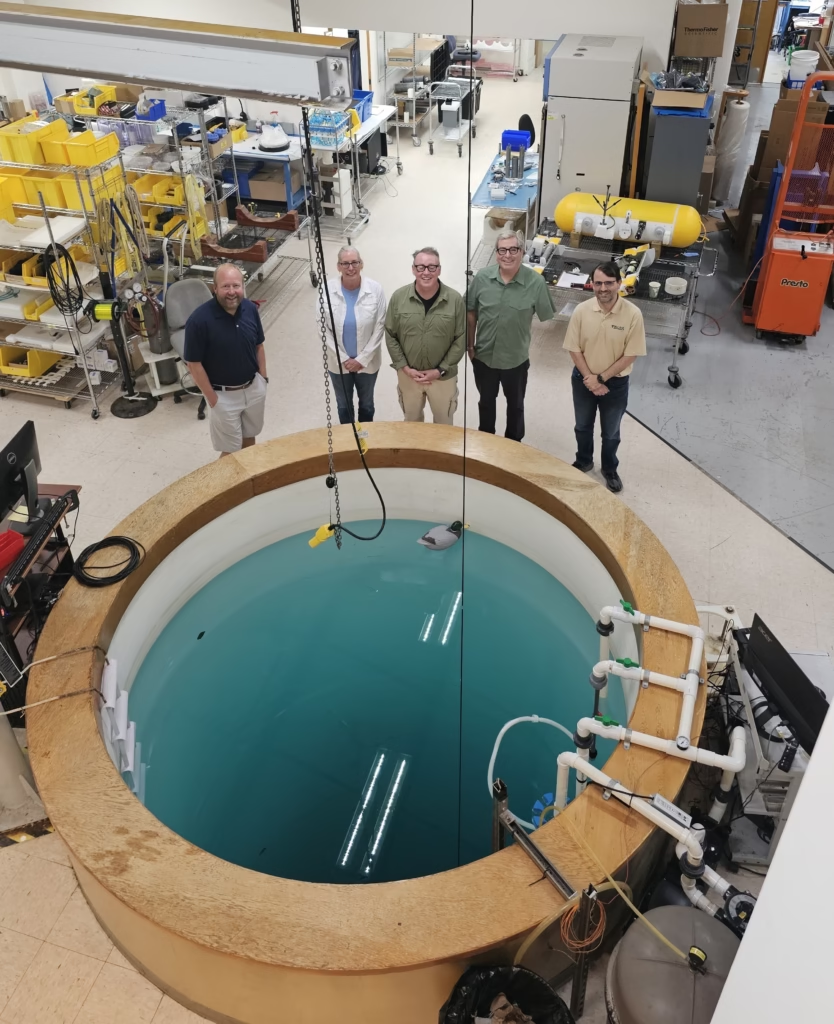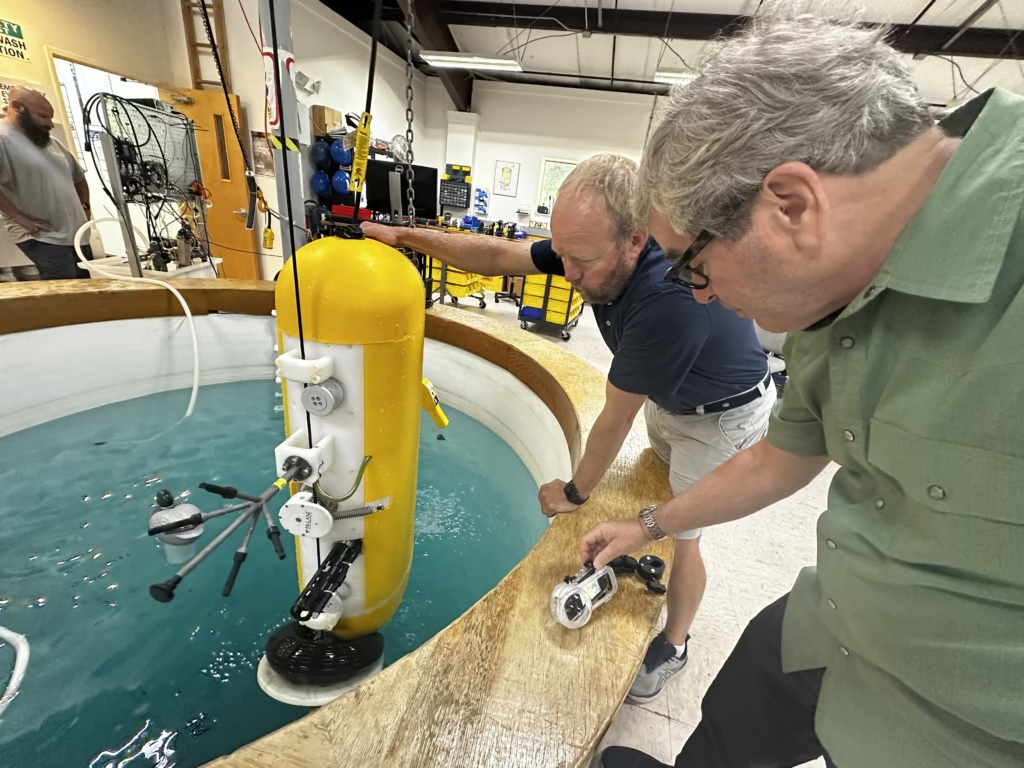McLane Research Labs manufactures a robotic oceanographic mooring known as an MMP (McLane Moored Profiler). This is a motorized device that carries a CTD (conductivity, temperature, and depth) and a current meter, and travels along a wire affixed to the sea floor. The mooring is fixed in place on the sea floor by heavy train wheels used as a negative ballast. The upper portion of the wire is held in place near the sea surface using a large float. This robotic instrument can provide oceanographic measurements over the entire water column for time scales ranging from hours to months, or even years.
During August of 2025, Denise and David Holland attended an intensive training at McLane Labs to learn how to program, deploy, and recover the robot. The tests were successfully conducted in a 15-meter vertical test tank.

The robot is now on its way to South Korea, where it will join the research vessel Araon. It will be deployed in January 2026. It will be situated over a sill in the Thwaites Trough on the continental shelf abutting the Thwaites Glacier.
The current operational plan is to retrieve preliminary data from the mooring in February 2026. A complete set of data will be retrieved two years later, on a return visit by the Araon to Antarctica.
The data are critical to the design engineering of the fabric and size of a seabed anchored curtain. In particular, the data from the robot’s current meter will help engineers compute the forces to be experienced by such a curtain. From the CTD data, the spatial positioning of the warm waters in the trough will be visualized. This will aid engineers in the design of the curtain’s overall dimensions.


